Succulents are an easy growing, versatile set of plants as they require easy maintenance to grow well. But do you know What succulents are hardest to kill?
Many gardeners across the world like to grow them due to their cute appearance and hardy behavior.

In fact, you can find them anywhere in the world. So, in simple words, succulents have gained popularity significantly among the gardeners and many people are fans of them.
So, if you are also willing to start growing these plants and are a bit hesitant on what you should select first, I suggest you proceed with the easy succulents first.
What Succulents Are Hardest To Kill?
There are some succulent species which are relatively easy to grow when compared to others. You may go for exotics , rare succulent types later on once you get the experience.
So , the following is the answer to “What succulents are hardest to kill?” or hardy succulents which you can start growing.
Furthermore, it is very unlikely that you will end up killing them. In fact , succulents are self-sustaining plants and if you overly look after them, there will be a high chance of losing your beloved plants.
The minimum care treatment you provide the better it would be. They will thrive well with neglect.
Agave
Agave is a large genus which you may come across in the succulent world. What makes them more attractive are their rosette shapes. Further their pointed leaves are another distinguishing feature of these plants.
Agave species are spread in a wide array. To explain further on this, there could be some dwarf species and other huge plants as well. The larger agave plants can spread up massive heights as 10 feet.
You may cultivate them either indoors or outdoors depending on the conditions and on your desire as well. They would look great in pots and in containers.
They are tolerant of light shade to full intense sunlight as well. You may also come across several agave species which have a cold tolerance as well.
If you are someone who is looking for easy going less fuzzy plants, agave plant species would be ideal for your requirement. They are hardy to kill.
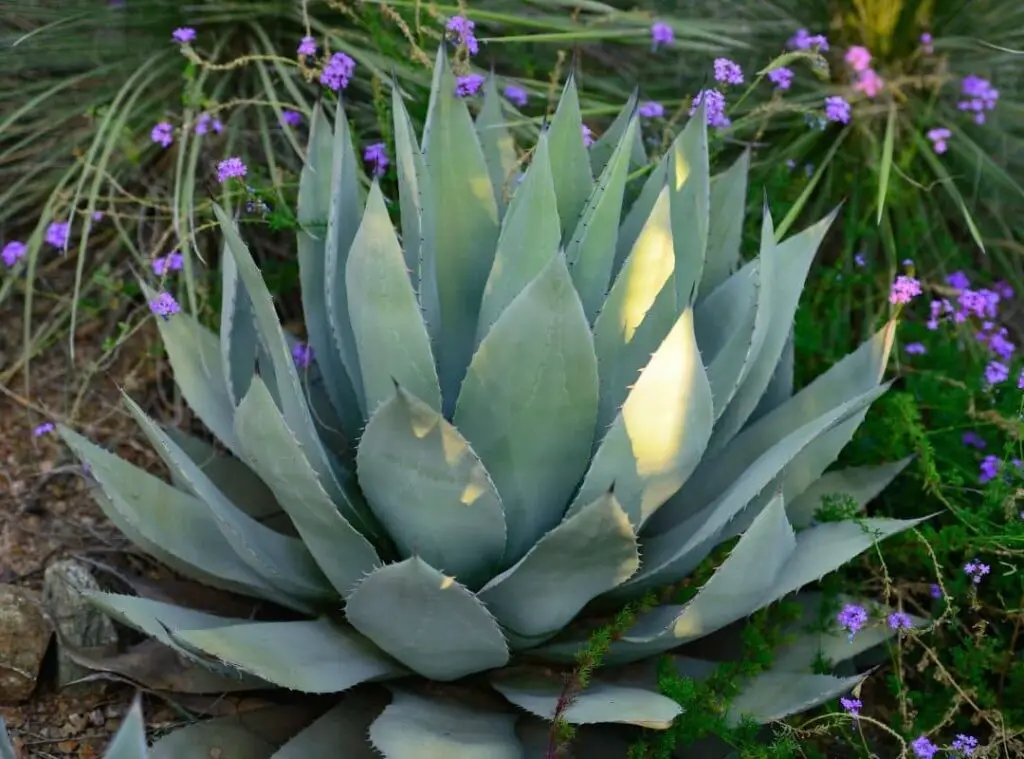
Aloe
Aloe is yet another large popular genus of the succulent’s world. They may also comprise both dwarf species as well as massively grown succulent species.
The large plants can grow up to 30 feet ( 10 m) in height. Aloes come up with thick fleshy leaves. further you could spot them in green, blush gray in color.
Some aloes may develop white flecks on the stems too. Aloe dwarf species would be excellent for indoor gardening.
The larger versions of the aloes would be great for outdoor gardening, and you can grow them in full sunlight. You can either grow them as landscape plants or even as large container plants.
There are some large Aloe species which can withstand mild frost conditions also. The exposure to mild frost conditions for shorter periods would not create any damage on the plants. They need a minor care treatment from you and still they will grow to their best potential.
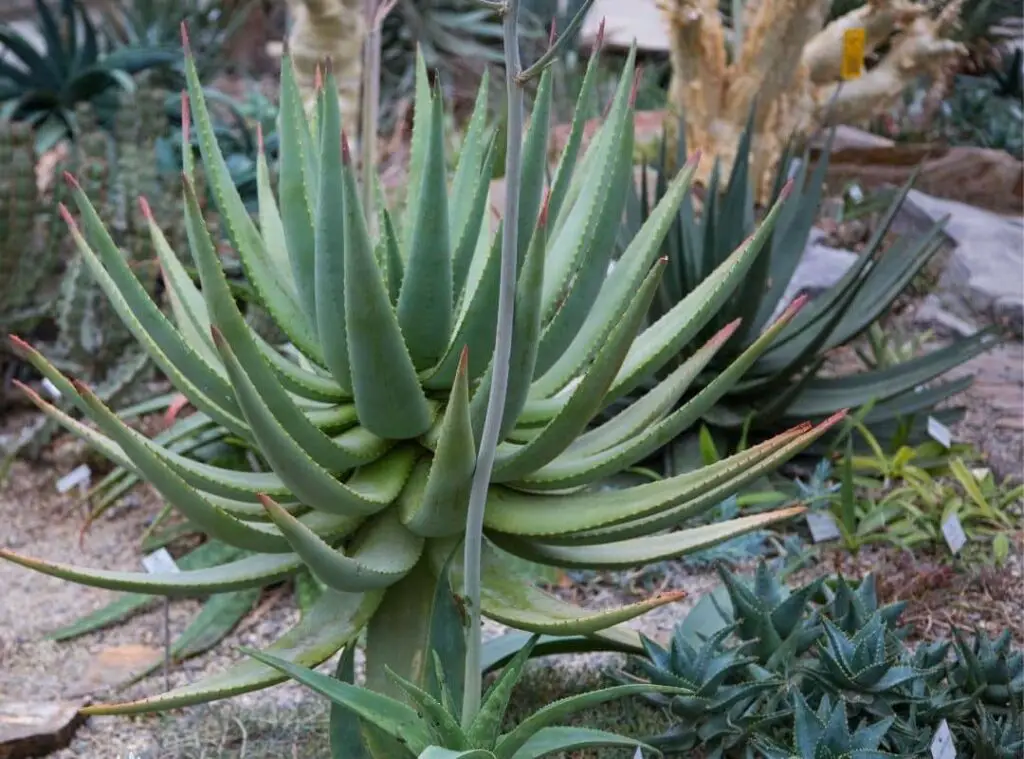
Crassula Tetragona (Mini Pine Trees)
Mini Pine Trees are endemic plants to South Africa. They usually produce thin narrow leaves which you could spot in usually green color.
The Mini pine trees would further consist of brown barks. Mini Pine Trees would get as tall as 3 feet. At the beginning of the growth, they would tend to form as shrub types. Later on, as they grow further they would grow as trees.
Mini Pine Trees emerge with flowers in white. Further they are small in size and would usually appear at the plant’s tips.
Chances are that they may form sunburns if you expose them to extreme sunlight levels. Hence you need to protect the Mini Pine Trees from extreme sunlight.
Caring for a Mini Pine Tree is very easy. Further propagating the Mini Pine Trees is also very easy too. Many people opt to use the stem cutting propagation method to propagate them. The durability of these plants is quite high.
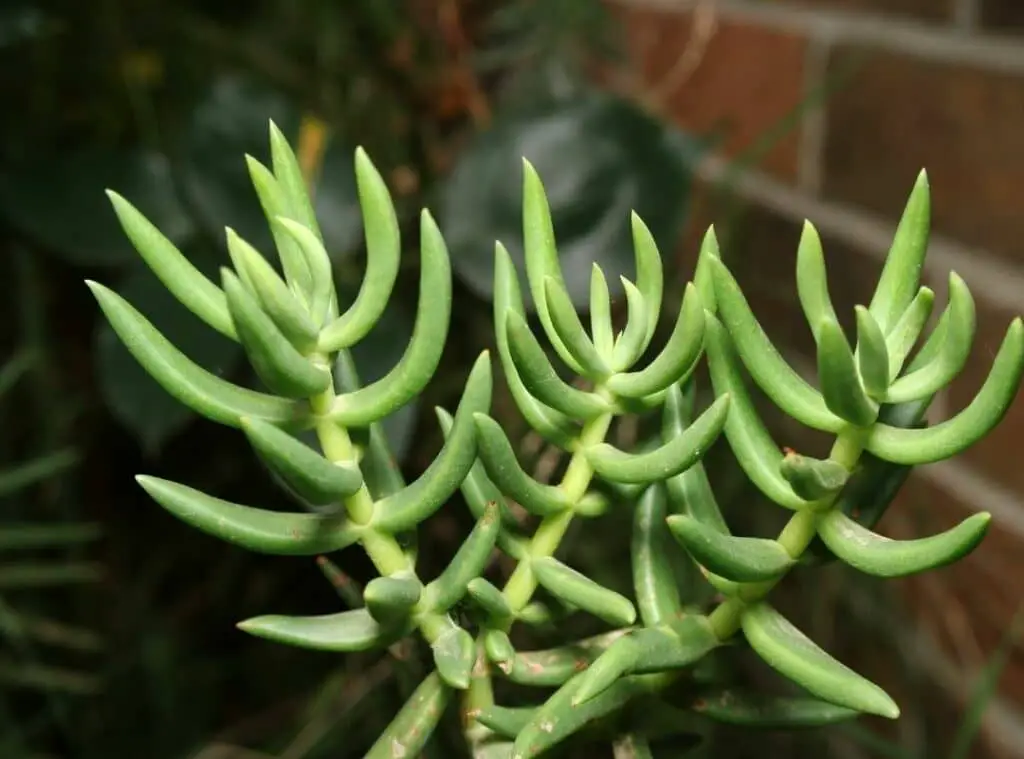
Crassula Ovata (jade plant)
Jade plants belong to Crassula which is yet another large genus of the succulents. Jade plant is a commonly spotted plant in this genus, and they are known as money plants, lucky plants in common.
These are originating from South Africa and from Mozambique. Jade plants are evergreen plants which are renowned for their thick fleshy leaves. Furthermore, those leaves are shiny and smooth too.
The leaves would grow in opposite pairs. Jade plant leaves would usually develop in dark green. Further those leaves may develop red margins once you expose them for ample direct full sunlight.
Occasionally you may also come across leaves with yellow green hues too. Jade plant branches would become thick as they grow older.
Jade plants are less fuzzy plants which would require a minor supervision from you. What is special about these plants is that they can withstand different lighting levels. If you acclimate the plants, they can also tolerate full sunlight.
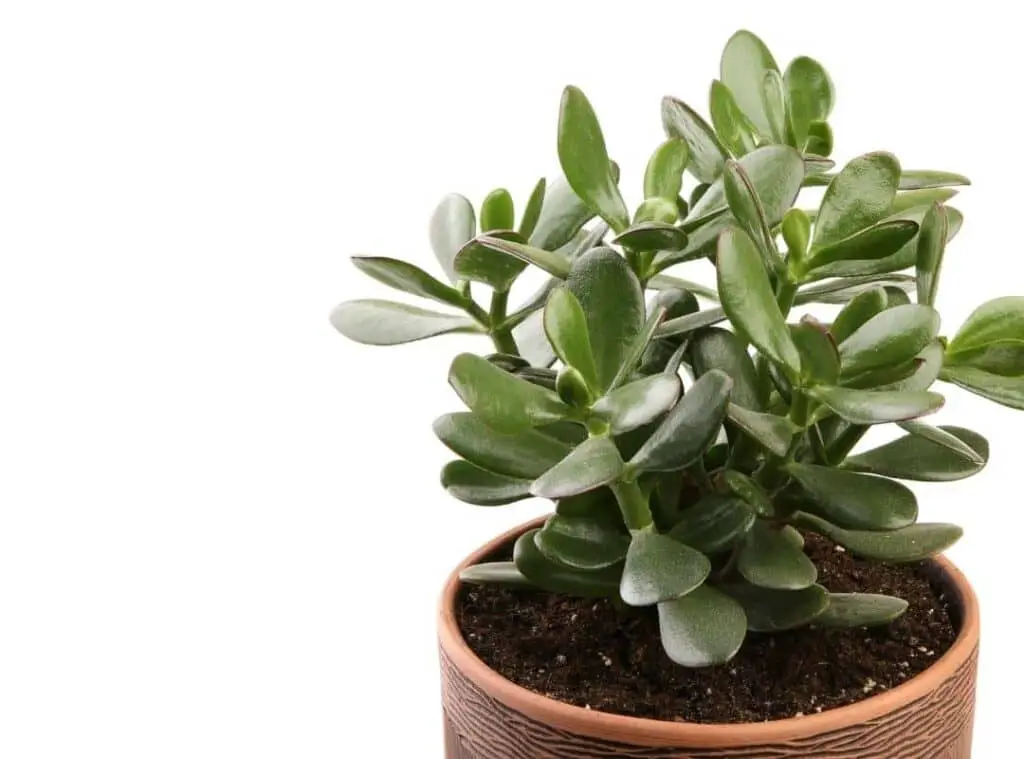
Portulacaria Afra (Elephant Bush)
Portulacaria Afra which are known as elephant bush are native to South Africa. They are a hardy versatile set of plants.
Keep in mind that elephants tend to fulfill their dietary requirements from these plants when they grow in the wild. They can grow massively when they grow in their natural habitats. To be more precise, they can grow up to 20 feet in height.
If I briefly explain on the leaves of the Portulacaria Afra plants, they would tend to take a glossy green color.
These plants would also grow as shrubs at the start, and they would tend to grow trees as they grow older. The stem would also be somewhat thick as they grow older.
These plants can perform well with neglect too. They are hardy as they can thrive in different growing conditions. You could use their stem cuttings and easily propagate them too.
Many people tend to grow them as fillers in different succulent arrangements. They can live long, and it would be very hard to kill the plants.
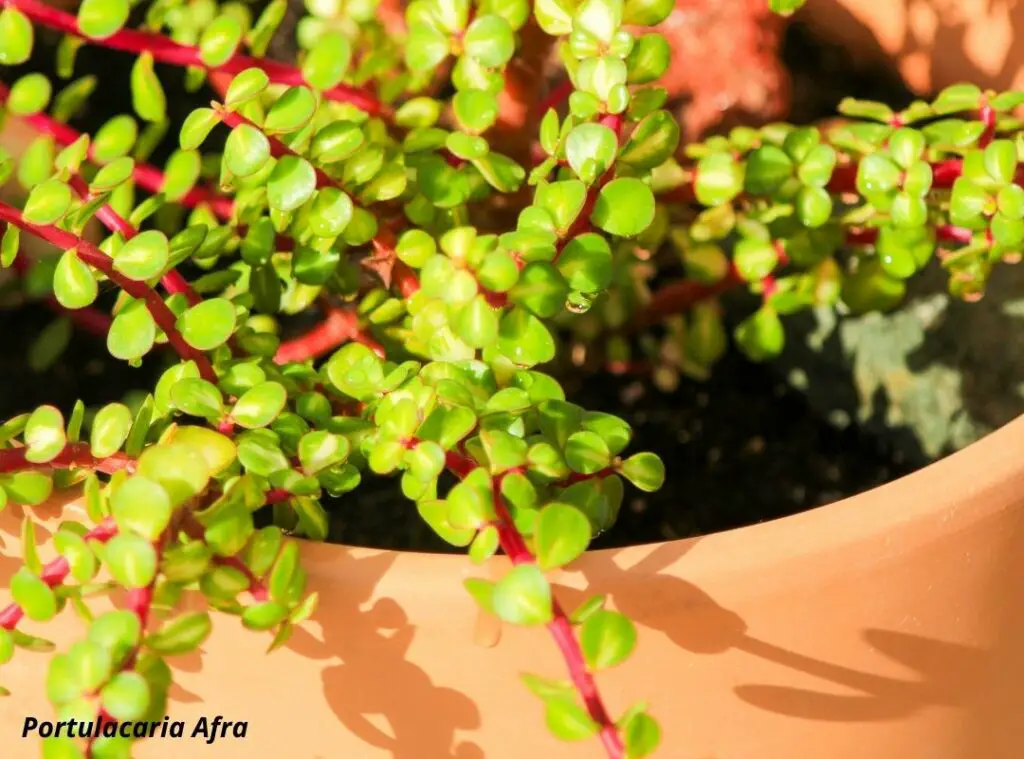
Aeonium ‘Blushing Beauty’
Aeonium ‘Blushing Beauty’ plants are hybrid plants. They are a cross between two aeoniums. Those aeoniums are easy to find and easy to propagate as well.
Aeonium are renowned for their ability to withstand the cold conditions. Besides, they can grow in full sunlight to partial shade as well.
Keep in mind that Aeonium plants may go dormant during excessively heated conditions. During this period, they would tend to curl up their leaves so that they can conserve water. You may grow these plants either in the ground or in containers.
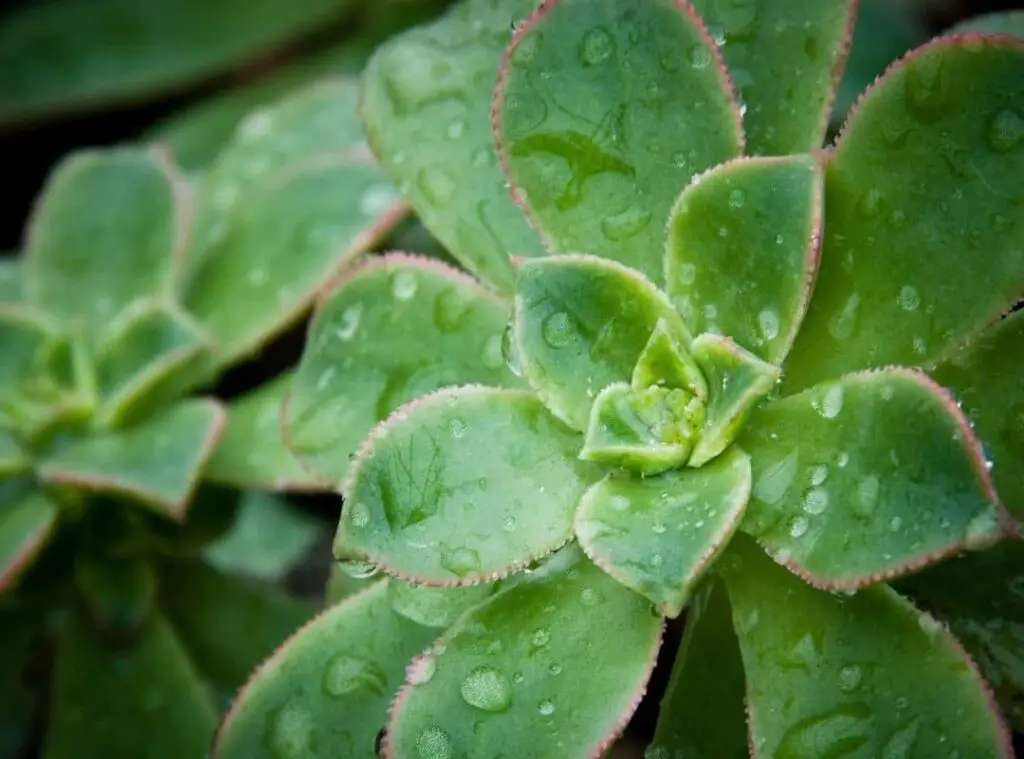
Euphorbia Milii (Crown of Thorns).
Euphorbia Milii which go by the common name Crown of Thorns are native to Madagascar. These plants can also survive in different growing conditions.
Chances are that they can reach a maximum height of 1-2 feet when they grow to their best potential. In addition to that, Euphorbia Milii (Crown of Thorns) plants may emerge with flowers in red, pink or even in white color.
It is noteworthy that these plants may develop sharp thorns. Those thorns would grow up to ½ inch in length.
You can grow them either in full sunlight or in shade. Euphorbia Milii (Crown of Thorns) are hardy plants. furthermore you cannot easily kill them too.
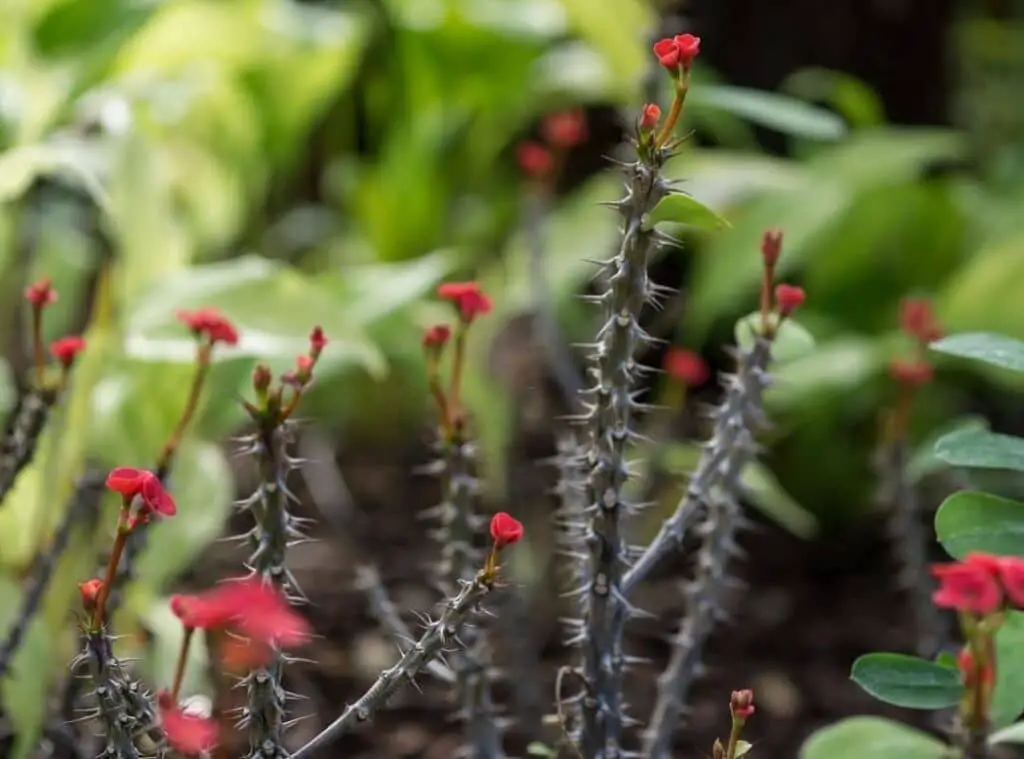
Haworthia Attenuata (Zebra Plants)
Haworthia Attenuata are also known as Zebra plants. These plants are endemic to South Africa. One might think that they tend to take a look at an Aloe plant when you look at them briefly.
Haworthia Attenuata develop leaves which are thick. Those leaves would tend to take a pointed shape as well. They may further consist of zebra-like white variegated stripes too.
One might think that they appear as a warty growth too. They would be great picks for both indoor gardening and for outdoor gardening.
Apart from that, Haworthia Attenuata plants can tolerate different lighting conditions too. They would tend to show a slow growth pattern when they start to grow at the beginning. However, once they establish offsets and pups, they would tend to grow at a rapid pace.
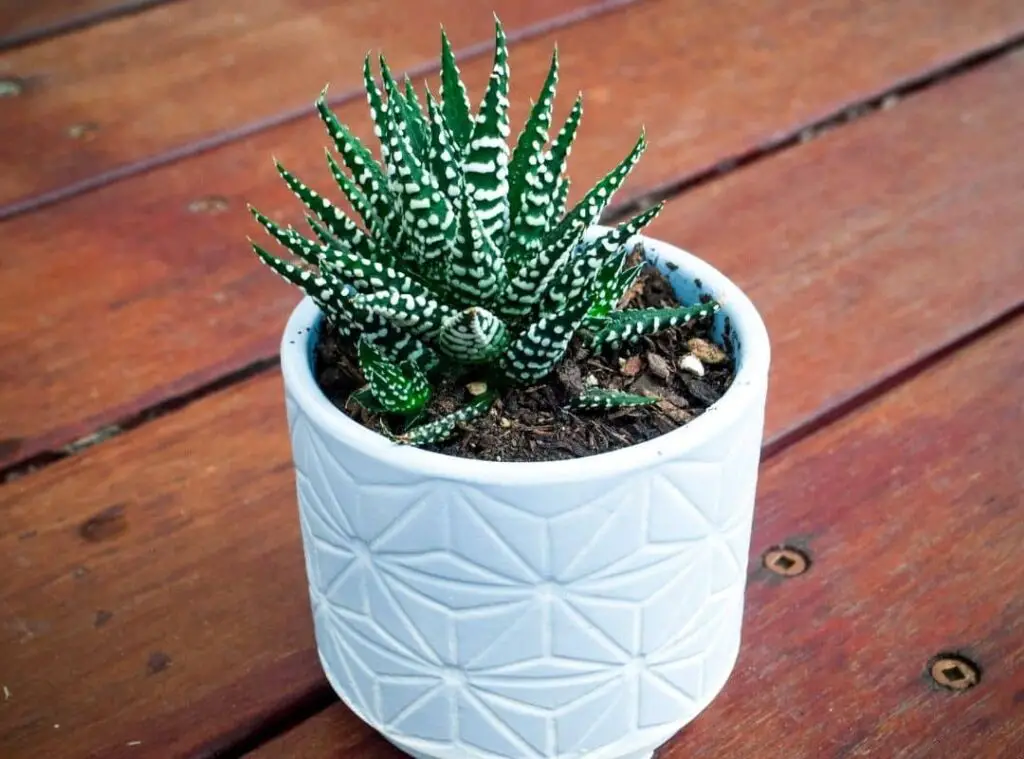
Kalanchoe Daigremontiana (Mother of Thousands)
Mother of thousands plants are glamorous plants which would tend to take an unusual look. These plants may come up with large green colored leaves.
They would usually develop along the edges of the plants. They can grow anywhere, and it would be somewhat difficult to get rid of them once they are well established since they grow at a rapid rate. That is what made them inherit the common name called mother of thousands.
Mother of thousands plants are super hardy plants. Furthermore, they are tolerant of intense heat if they are mature enough.
If you were looking for a rapidly growing plant which would multiply at a rapid rate, Mother of thousands would be the one for you.
However, keep in mind that these plants would be somewhat invasive when they grow. If you want to control their growth, best is to grow them in containers. When you grow them outdoors, you can grow them somewhat far from the other plants.
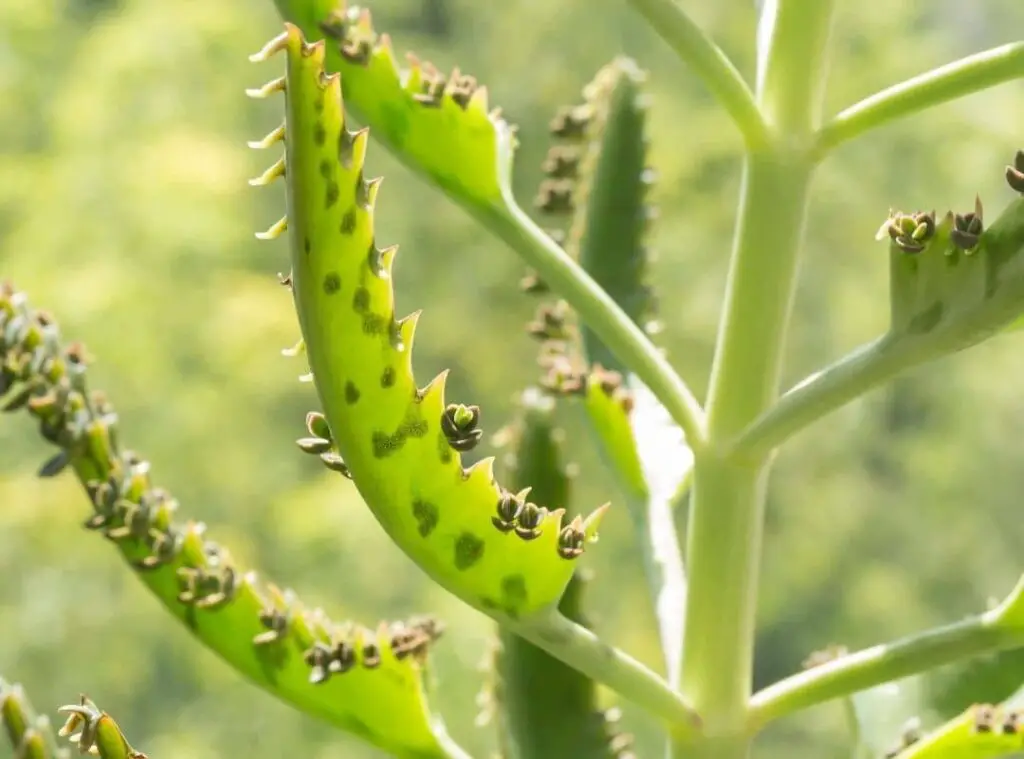
Kalanchoe Delagoensis (Mother of Millions)
Kalanchoe Delagoensis plants are also known as the mother of millions. Many people get confused when they have to identify these plants with the mother of thousand plants as they share some common features with the mother of thousands plants.
Kalanchoe Delagoensis plants also grow and multiply at a rapid rate. Hence why they have earned the common name called mother of millions.
You could see them producing little plantlets quite often. Despite the small sizes of the plantlets , they can grow relentlessly despite the location you grow them. Furthermore, their seeds can also survive for a longer period once you take the plants out.
Kalanchoe Delagoensis plants are used to grow in hot and arid conditions. That said, they can adapt to different growing conditions as well.
Some people consider these plants as an invasive weed type due to the rapid growth pattern of them.
If you were wondering how to grow a plant which you can grow easily and which can stay firm during toughest conditions, Kalanchoe Delagoensis plants would be the one to try out.
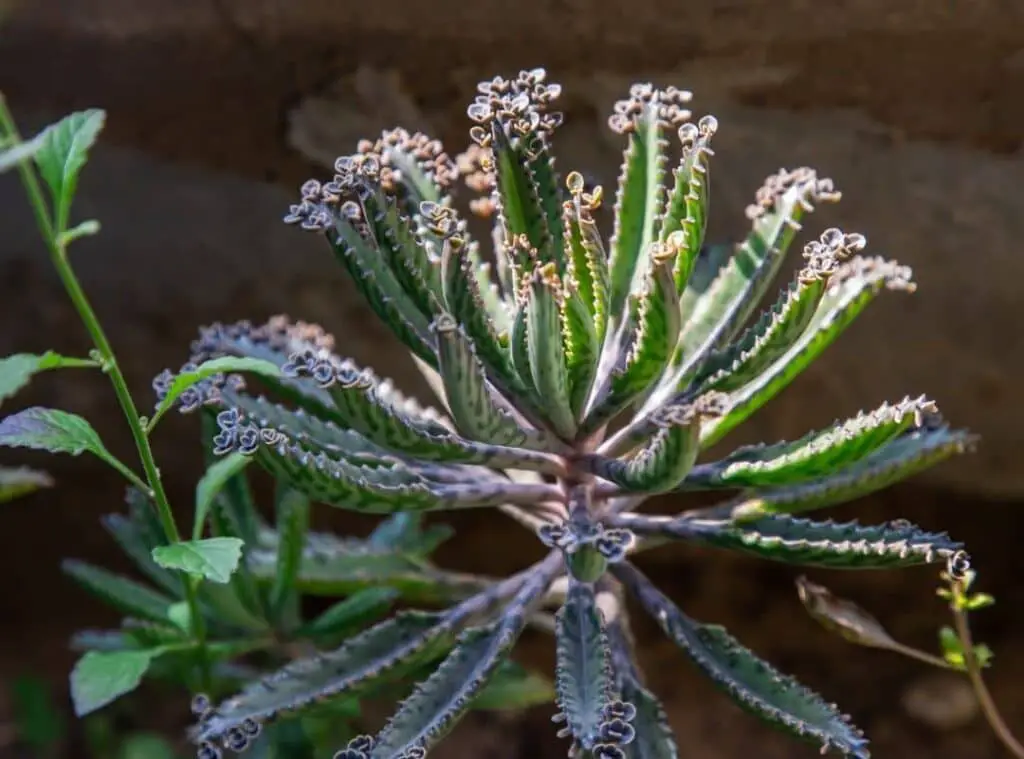
Kalanchoe Flapjack
Kalanchoe Flapjack plants are yet another hardy set of plants which you cannot easily kill. They usually come up with smooth flat leaves.
The exposure for ample sunlight would make them develop blush in red. These are monocarpic plants. However, to compensate for that, you can easily propagate them using offsets of the plants. They can perform well in full sunlight to partial shade.
They would grow up to 24 inches ( 61 cm ) in height. Furthermore, they would be about 36 inches ( 91cm) broad when they grow to their best potential.
Kalanchoe Flapjack leaves would be about 6 inches ( 15cm ) in length and 5 inches ( 12.5cm) in width.
Kalanchoe Flapjack are called Paddle plants as the leaves tend to take the shape of a paddle or clam. Kalanchoe Flapjack are not the type of plants where you have to spend a lot of time taking care of them.
If the outdoor conditions are to their liking you can grow them outdoors too. They are endemic plants to South Africa. Kalanchoe Flapjack may develop blooms in yellow during spring.
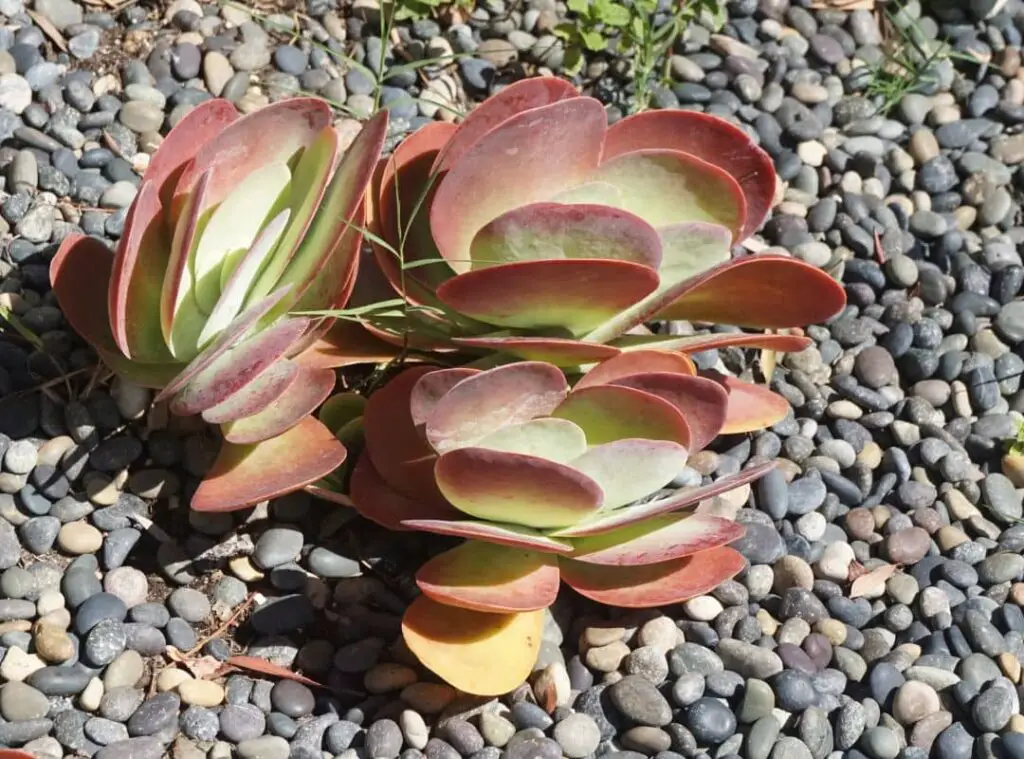
Sempervivum (Hens and Chicks)
Hens and chicks are amazing plants which are quite popular among the succulent enthusiasts. They are well known for their extra special beauty.
They are quite famous for landscape plants. Hens and chicks can grow faster and multiply faster too. They would usually develop clusters of small chicks around the base of the parent plants. That gives them the common name called Hens and chick.
You can easily grow them. Besides that, they would form in so many different colors , sizes as well as in different textures.
There are certain species of hens and chick which would form as small plants as well as big plants. Furthermore, they can withstand the full sunlight and the partial shade too.
These features make them versatile plants. The exposure to full bright indirect sunlight would help them to intensify the colors.

Senecio radicans (string of bananas).
String of bananas tend to grow as trailing plants which would grow at a faster rate. String of bananas are hailing from South Africa.
Furthermore, they are quite renowned for their banana shaped leaves. Furthermore, those leaves tend to take a glossy look too.
These are some amazing hanging plants which you can even make them grow upwards. Further you may even grow them on a moss pole as well. You can grow these plants outdoors. In fact, they would be great picks for succulent gardens.
However, these plants do not tolerate frost and you can grow them outdoors only if you are experiencing warmer conditions right throughout .
You could spot them bearing flowers during spring. Those flowers would b white or light pink in color. The mature size would be about 36 inches long.
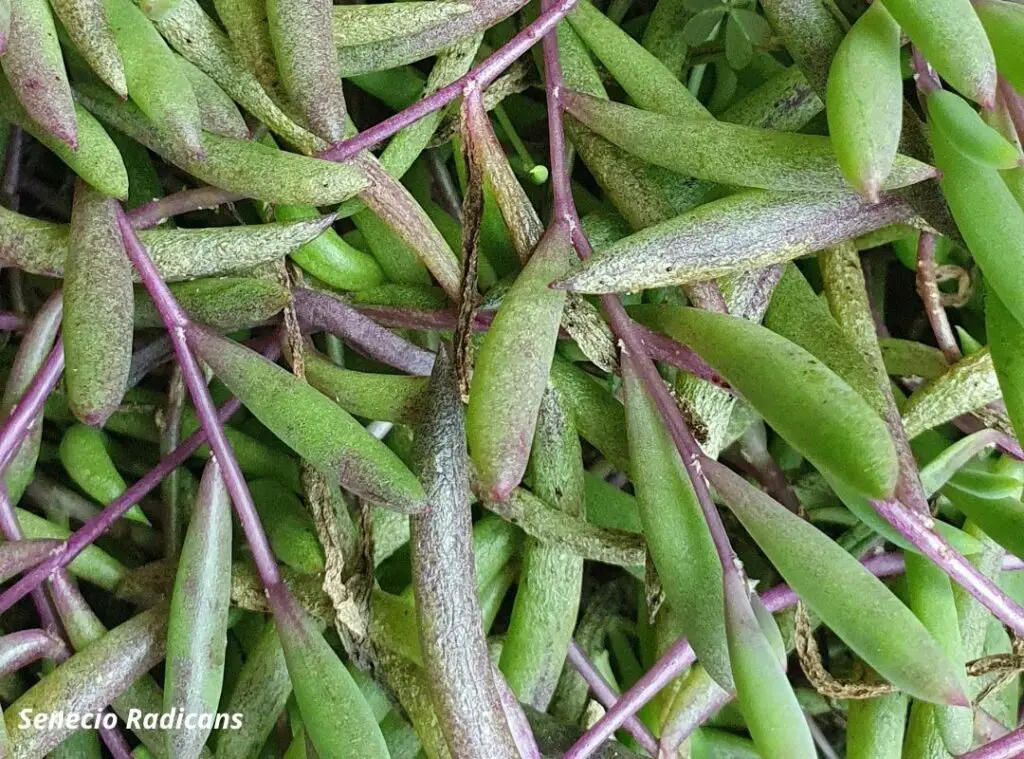
Sansevieria Trifasciata (Snake Plant).
Sansevieria Trifasciata are known as snake plants, mother in laws tongue etc. These plants are originating from West Africa.
The distinguishing feature of these plants are their long slightly windy leaves. Those leaves would form upward.
The leaves would be prominent in green color. Further there could be some varieties which would form in yellow edges as well.
It is noteworthy that these plants can purify air by toxic gasses from the air. As such they would be great plants to grow indoors.
Their ability to thrive in neglect make them perfect choices for starters in succulent gardening. You can easily care for them.
Further they can thrive in different light conditions as well. In fact they are tolerant of low lighting levels too.
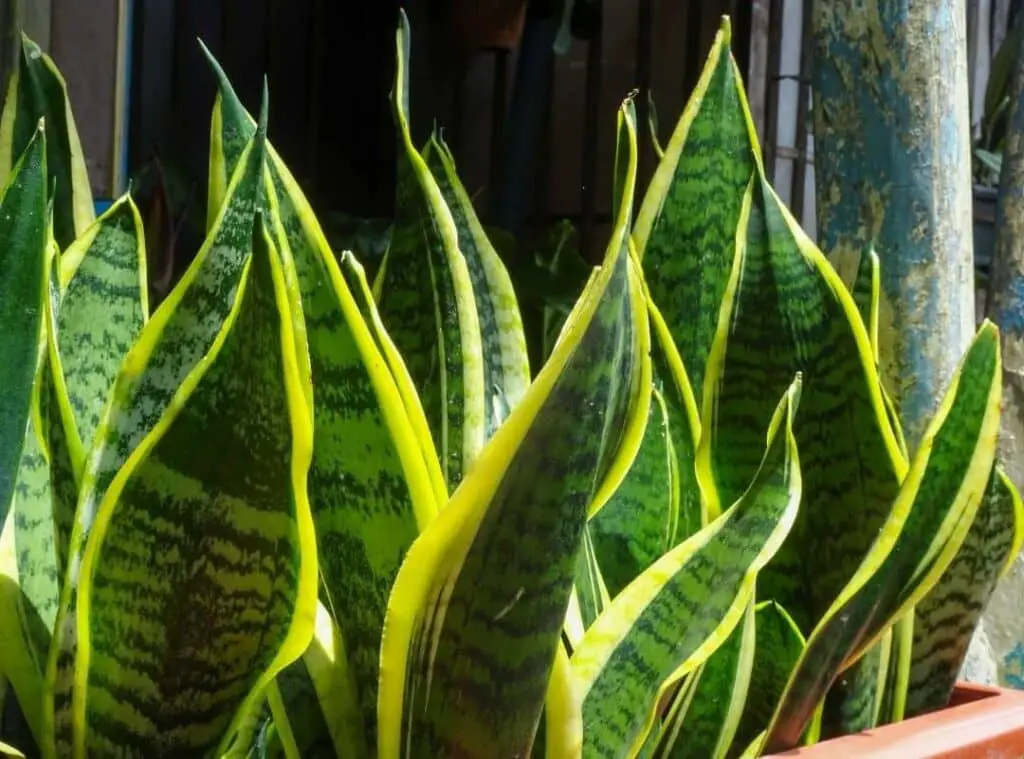
Sedums
Sedums are yet another easy growing set of plants. They are low growing evergreen perennial succulents which would be ideal as excellent groundcovers too.
They would usually grow sprawling in a vertical manner. Furthermore, you can grow them in containers as well.
Sedums will thrive with minimum supervision from you. In other words, they will thrive well with neglect. If you overly look after them, chances are that you may end up killing the plants.
Sedums can perform well if they get bright sunny conditions in general. Having said that, they can also withstand low lighting too.
Just like the above succulents, you can easily propagate the Sedums as well. The dwarf sedums can grow well wherever they get in contact with the soil.
Further they can form roots quite easily from the stem or even from the leaves whenever they get in contact with the ground.
Sedums can tolerate heat too. In addition to that they can also withstand some frost as well. Hence you can consider these plants as super hardy plants.
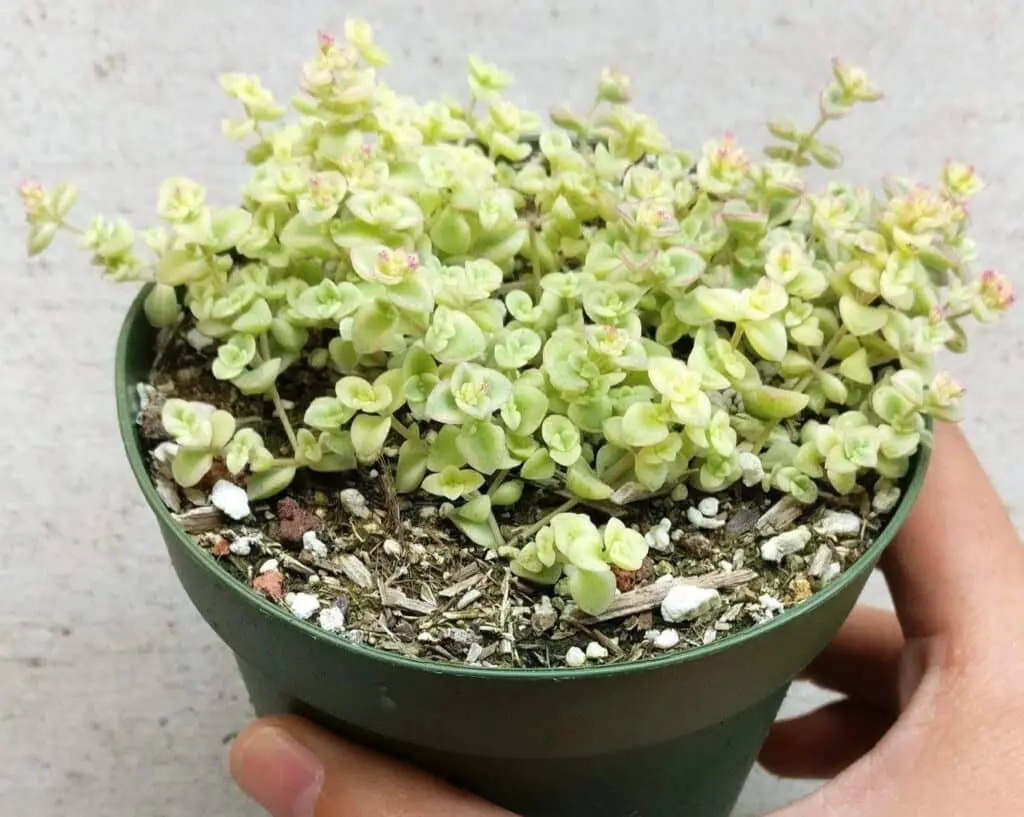
Sedum Rubrotinctum (Jellybean)
Sedum Rubrotinctum are commonly known as Jellybean plants. Their leaves tend to take the shape of a jellybean and you could spot them in green.
However, when you expose them for full sunlight it would make the leaves tips turn red. in addition to that they would blossom with flowers in bright yellow color during spring.
Those flowers would be star-shaped. Growing them and propagating the Sedum Rubrotinctum are very simple. They can perform well in neglect.
For example, they can thrive well in mild frost conditions as well as in intense heat as well. Due to these features, they are called tough hardy plants. Killing them would be very difficult due to these characteristics.
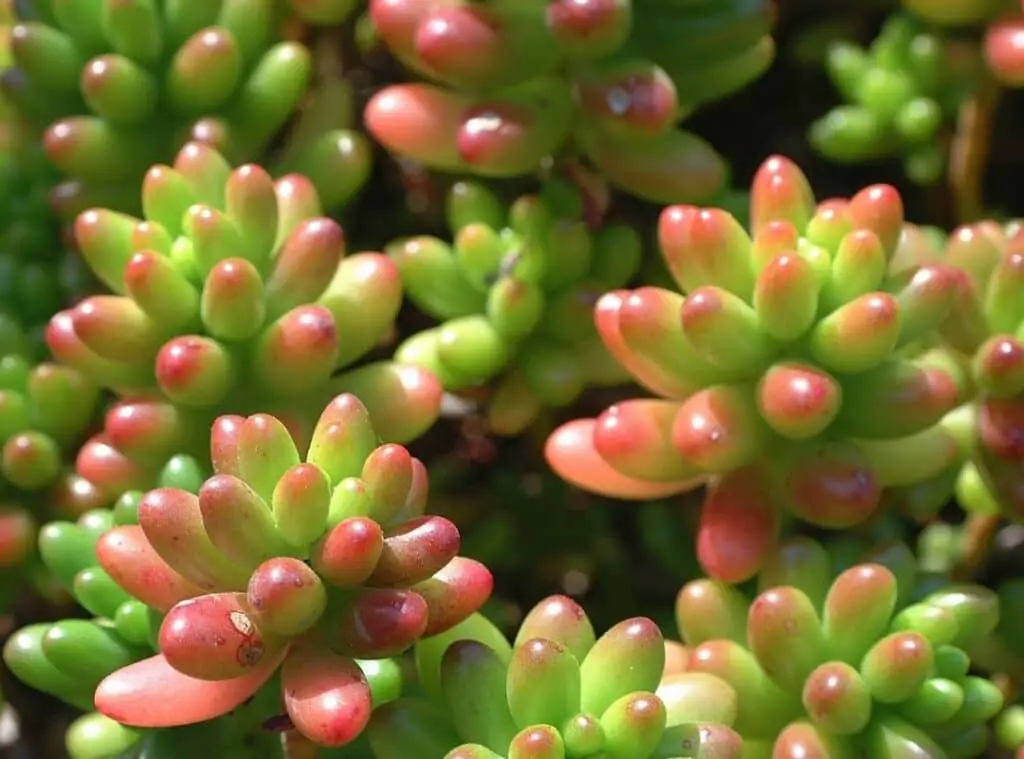
Sedum Morganianum (Burro’s tail)
Sedum Morganianum are commonly known as Burros tail, donkey tail etc. Just as their common names describe them, Sedum Morganianum plants consist of thick short leaves.
You could spot them tightly packed as well. Those leaves would be connected to the plants somewhat loosely. As such they would tend to drop even if you try to touch them gently.
Those leaves will form in multiple colors. For example, they would form in vivid blue green to regular green color. Further chances are that they may also form in gray as well. In addition to that they may also come up with a white dusting as well.
Sedum Morganianum plants may reach a maximum height of 4 feet when they get their desired growing conditions.
So, when you grow them as hanging plants you need to use a study hanger as they could get heavier as they mature. They grow as spineless plants. They would make great additions despite you growing them as solitary plants or along with other plants.
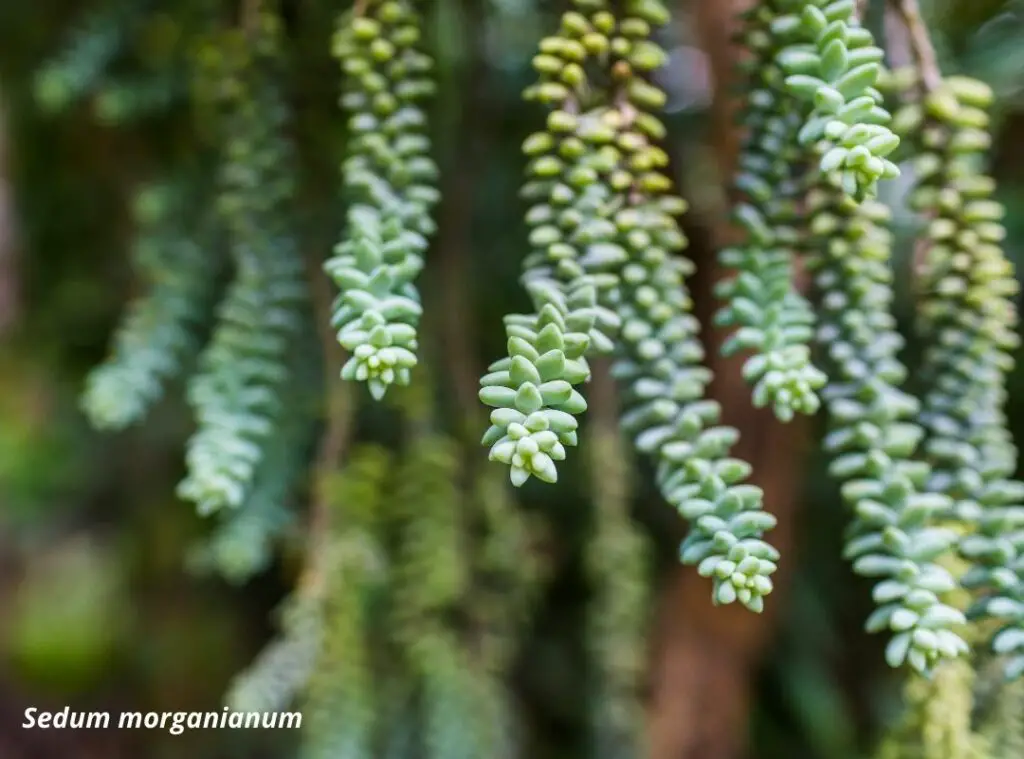
Adromischus cristatus (crinkle-leaf plant)
Adromischus cristatus are native plants to South Africa. They usually consist of fan shaped leaves. Furthermore, those leaves may carry crinkles in the edges of the leaves.
Adromischus cristatus are commonly known as crinkle leaf succulents. Adromischus cristatus plants are expected to reach a maximum height of 12-18 inches.
They would grow well in full sunlight to partial shade. Last but not least they would blossom with white or near white flowers during summer and in fall.
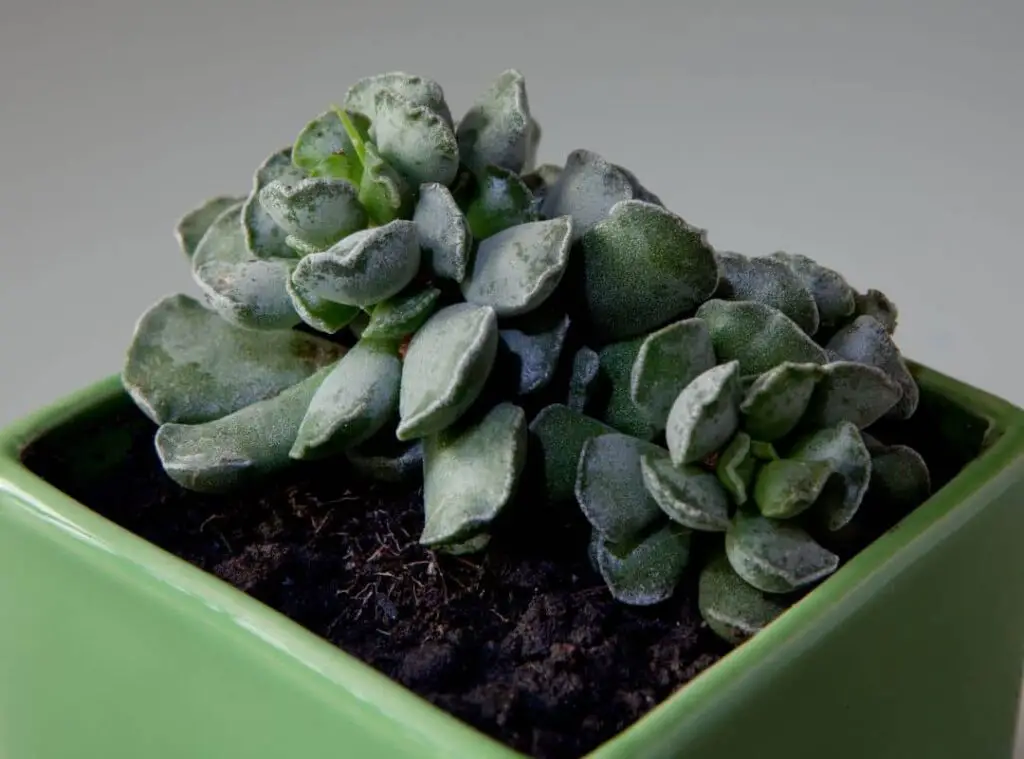
How to care for the long-lasting succulents
Water
Over watering is what could kill your plants most of the time. Succulents conserve water in their foliage. This is what helps them to thrive in the hot and arid conditions.
However, you need to water them moderately so that it would help them to survive. You need to ideally water them moderately and thoroughly and let the excess water move out from the pots.
Next allow their soil to wither between two watering sessions. If you want to ascertain whether the soil is dry or not, you could simply place the finger in the soil and check whether it is moist or dry.
Generally you need to water them once every one or two weeks when they are at their active growing pace. On the other hand, you need to reduce watering of plants when the weather is too cold.
Soil
Providing a fast draining soil mix is important just like watering the plants well. Literally you cannot reap the best results of proper watering if you don’t provide a soil mix which has excellent drainage.
Succulents don’t prefer to stay exposed to waterlogged soggy conditions. If you accidently do so, it would lead for rot in them.
So, it is mandatory that you go ahead with a soil mix which is fast draining. I suggest you choose a commercially made succulent soil mix and add elements such as perlite to further enhance the draining of the mix.
Sunlight
Majority of the succulents are used to grow in hot and arid drought conditions. However, you need to protect the plants from the intense sunlight especially during midday in the summer. It is noteworthy that young plants will not tolerate direct sunlight at all.
Read Next : How To Induce Variegation In Succulents? (5 Methods)
